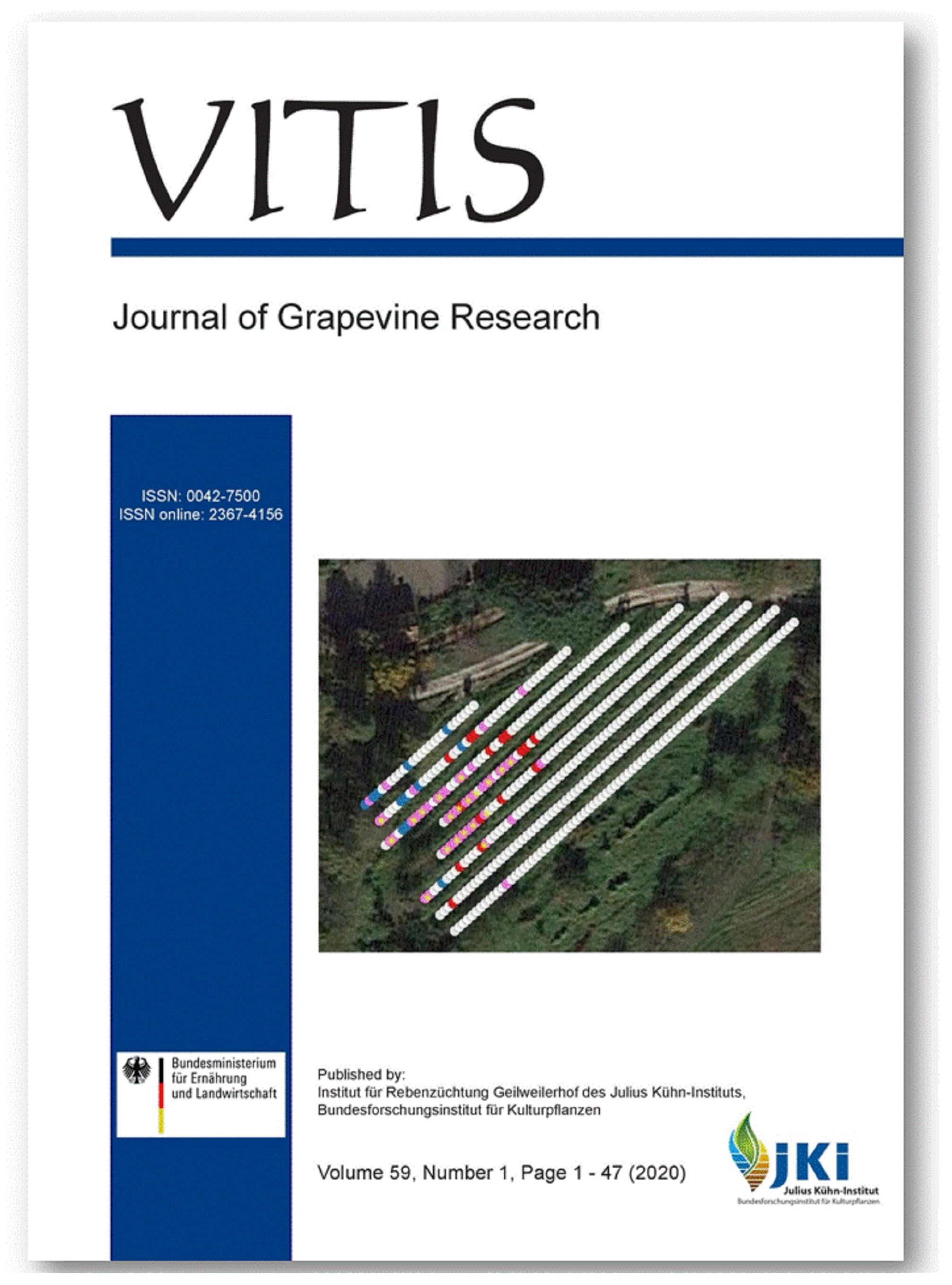Estimation of grapevine predawn leaf water potential based on hyperspectral reflectance data in Douro wine region
DOI:
https://doi.org/10.5073/vitis.2020.59.9-18Keywords:
handheld spectroradiometer; ordinal logistic regression; spectral vegetation indices; vineyard; grapevine water status.Abstract
Hyperspectral data collected through a handheld spectroradiometer (400-1010 nm) were tested for assessing the grapevine predawn leaf water potential (ѱpd) measured by a Scholander chamber in two test sites of Douro wine region. The study was implemented in 2017, being a year with very hot and dry summer, conditions prone to severe water shortage. Three grapevine cultivars, 'Touriga Nacional', 'Touriga Franca' and 'Tinta Barroca' were sampled both in rainfed and irrigated vineyards, with a total of 325 plants assessed in four post-flowering dates. A large set of vegetation indices computed with the hyperspectral data and optimized for the ѱpd values, as well as structural variables, were used as predictors in the model. From a total of 631 possible predictors, four variables were selected based on a stepwise forward procedure and the Wald statistics: irrigation treatment, test site, Anthocyanin Reflectance Index Optimized (ARIopt_656,647) and Normalized Ratio Index (NRI711,700). An ordinal logistic regression model was calibrated using 70 % of the dataset randomly selected and the 30 of the remaining observations where used in model validation. The overall model accuracy obtained with the validation dataset was 73.2 %, with the class of ѱpd corresponding to the high-water deficit presenting a positive prediction value of 79.3 %. The accuracy and operability of this predictive model indicates good perspectives for its use in the monitoring of grapevine water status, and to support the irrigation tasks.
Downloads
Published
Issue
Section
License
The content of VITIS is published under a Creative Commons Attribution 4.0 license. Any user is free to share and adapt (remix, transform, build upon) the content as long as the original publication is attributed (authors, title, year, journal, issue, pages) and any changes to the original are clearly labeled. We do not prohibit or charge a fee for reuse of published content. The use of general descriptive names, trade names, trademarks, and so forth in any publication herein, even if not specifically indicated, does not imply that these names are not protected by the relevant laws and regulations. The submitting author agrees to these terms on behalf of all co-authors when submitting a manuscript. Please be aware that this license cannot be revoked. All authors retain the copyright on their work and are able to enter into separate, additional contractual arrangements.



